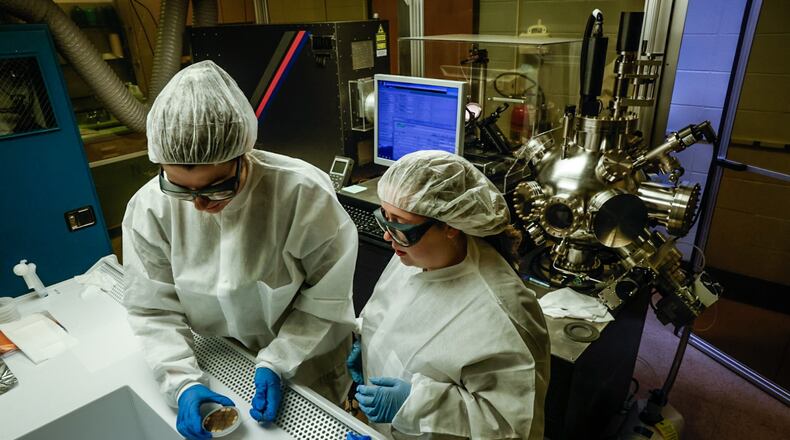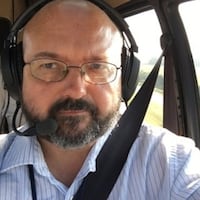Credit: Jim Noelker
Credit: Jim Noelker
UD first announced the objective of such a center in the autumn of 2022, weeks after Intel broke ground for dual Columbus-area semiconductor fabrication plants, with a projected workforce of 3,000 people.
Andrew Sarangan, chair of UD’s Department of Electro-Optics and Photonics, said in an interview that UD still awaits official word of the funding award from the National Institute of Standards and Technology. But he expressed confidence that the funding has been secured.
Training in this field is expensive, and expensive training equipment demaning ongoing maintenance is required, Sarangan said.
“It’s expensive even on the training side,” he said. “That’s the business we’re engaged in.”
UD’s objective is to expand its semiconductor manufacturing cleanroom space to accommodate more undergraduate students, Sarangan said. The planned expansion will quadruple the cleanroom space, which currently stands at less than 1,000 square feet.
Today, only graduate students engaged in research can use the university’s space, Sarangan said.
UD also seeks additional funds for renovation of the space, he added.
“When that happens, we’ll be in a position to train people in cleanroom work ... hands-on training and in academic courses that would prepare them for working in leading industies,” he said.
Sarangan said he is aware of the challenges Intel faces. The company has been identifed as a possible takeover target in recent days, and in August, Intel said it would lay off some 15,000 workers.
“This is not just about Intel. This is about the whole semiconductor ecosystem, and there are many, many players,” Sarangan said. “Intel is the most visible component of this.”
But the industry itself remains crucial to the modern standard of living. Chips are found in everything from trucks to microwave ovens, he noted.
“Society will come to a grinding halt without semiconductor chips,” he said.
“Ohio students and workers are going to lead in the industries of the future,” said Brown, Ohio’s senior senator and a Democrat. “With this investment at the University of Dayton, we are expanding opportunities for Ohioans to get the training they need to get a good paying job, where they can build a life here in Ohio and help further our state’s leadership in this crucial growing industry.”
“I am proud to have helped secure funding to enhance the incredible work being done by the University of Dayton to train and educate the next generation of workers. Semiconductors are an important part of the global electronics industry, our national security, and our local economy. In Congress, I will continue to work on a bipartisan basis to find ways to make the Miami Valley a place where accelerated advanced manufacturing can succeed,” said Turner, a Dayton Republican.
The university sought $250,000 for the center, estimating that up to 500 new jobs were possible, in an application to the Dayton Region Priority Development & Advocacy Committee (PDAC) two years ago.
“Reshoring of advanced chip manufacturing is a national priority and great opportunity for Ohio,” UD said in its PDAC application.
About the Author


